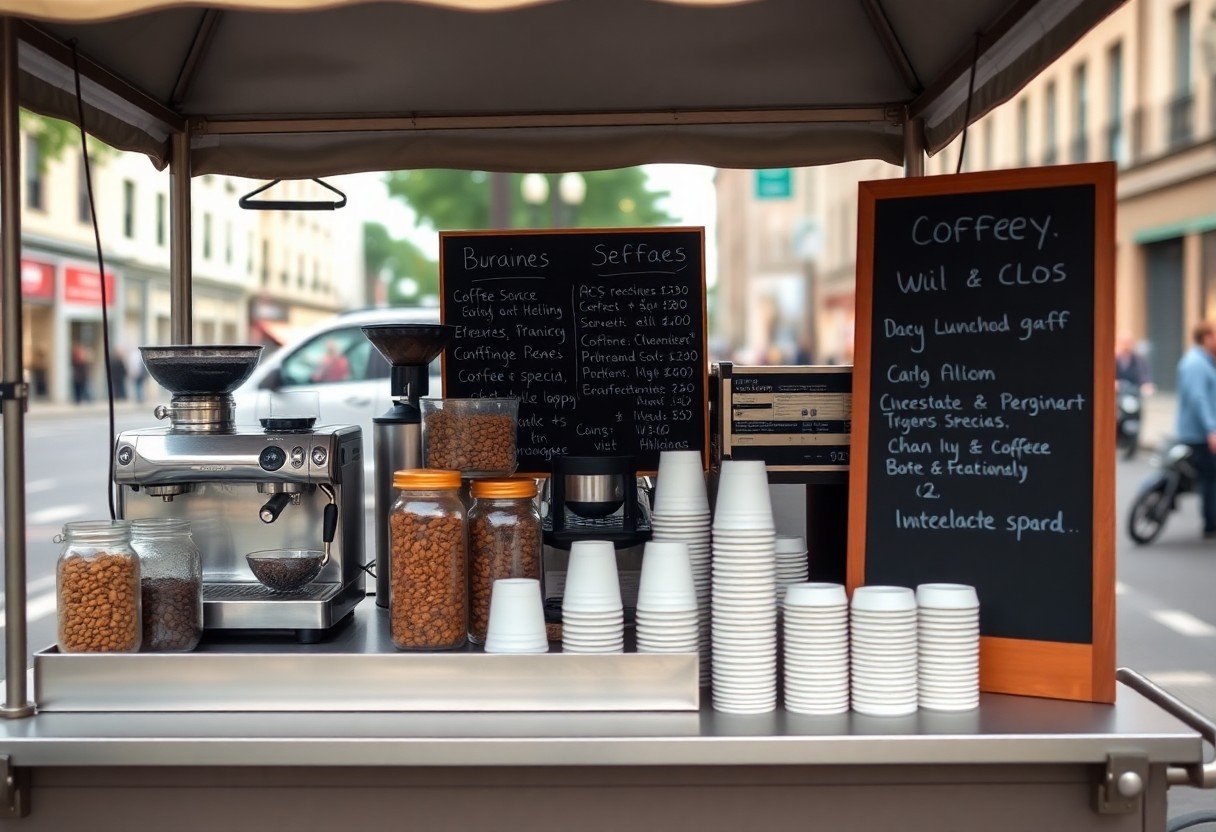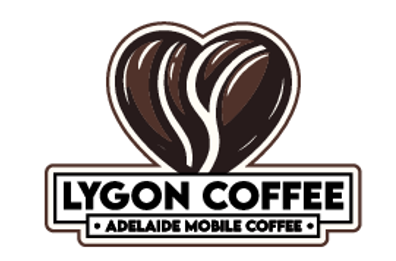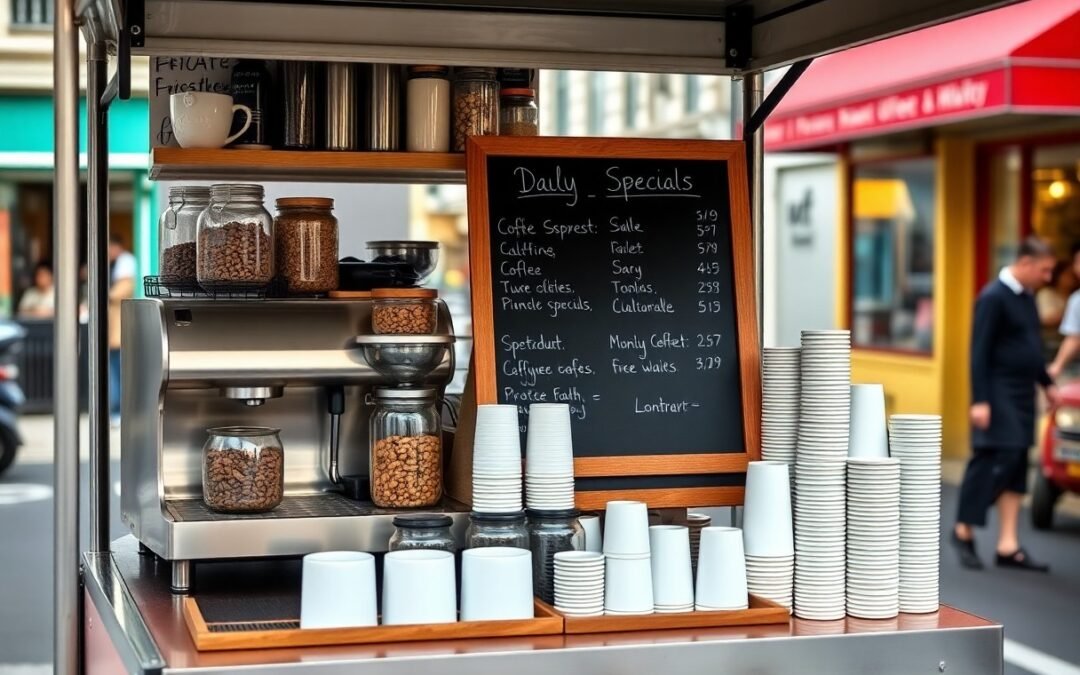Most aspiring entrepreneurs dream of owning a mobile coffee cart that brings delicious brews to eager customers. This guide provides you with important steps to successfully launch your coffee cart business, from market research and permitting to equipment selection and marketing strategies. You’ll learn how to navigate common hurdles and set your cart up for success, ensuring that your passion for coffee translates into a thriving mobile venture. With the right approach, you can create a vibrant coffee experience that captivates your community.
Crafting Your Unique Coffee Cart Concept
Your mobile coffee cart’s success hinges on a well-defined concept that resonates with your vision and values. Start by considering your personal passion for coffee, local trends, and what differentiates your cart from competitors. Whether it’s a focus on organic beans, artisan brewing methods, or a themed aesthetic, your concept should encapsulate a distinctive experience that attracts customers and creates a loyal following.
Identifying Your Target Audience
Define the demographic that best aligns with your coffee cart’s concept. Are you targeting busy professionals looking for a quick caffeine fix or coffee connoisseurs seeking unique flavors? Conducting surveys or interviews in your intended locations can provide invaluable insights into customer preferences, ensuring your offerings cater specifically to their tastes and lifestyle.
Developing a Signature Coffee Menu
Your signature coffee menu serves as the heart of your mobile cart, driving customer interest and repeat business. Focus on a mix of classic favorites and innovative choices that reflect your unique brand identity. Consider incorporating seasonal flavors, local ingredients, or specialty brewing techniques to create an unforgettable experience. A well-curated menu can enhance customer engagement, encouraging them to share their experiences and draw in more visitors.
In developing your signature coffee menu, aim to balance variety with simplicity. Offering five to ten core items allows you to perfect each drink while preventing overwhelm for customers. Include a range of brew methods—like espresso, pour-over, and cold brew—alongside unique flavor combinations that reflect local culture or trends. Additionally, consider incorporating options for various dietary preferences, such as plant-based milk and sugar alternatives, to cater to a broader audience and increase appeal.
Navigating Regulatory Hurdles and Permits
Launching your mobile coffee cart involves navigating various regulatory hurdles and obtaining necessary permits. Understanding the legal landscape is vital for ensuring compliance and avoiding costly fines. Local laws can vary significantly, so thorough research and planning are necessary to streamline the launch process and establish a solid foundation for your business.
Understanding Local Health Codes
Local health codes dictate the standards for food handling, sanitation, and overall safety in food service operations. Familiarizing yourself with these regulations ensures that your coffee cart meets all health requirements, including temperature control, cleanliness, and food storage protocols. Engaging with your local health department early can provide valuable insights and resources specific to your area.
Securing Business Licenses and Permits
Obtaining the right business licenses and permits is a key step in operating legally. You’ll typically need a general business license, a food service establishment permit, and possibly a mobile vendor permit depending on your location. Each jurisdiction has its own set of requirements, so consult your city’s business regulations online or meet with a local small business advisor to understand what you’ll need.
In many cities, you may also need a seller’s permit to collect sales tax and a zoning permit to operate your coffee cart in public spaces. For instance, in San Francisco, you’ll need to submit a detailed application to the Office of the Treasurer & Tax Collector and adhere to specific health regulations. Additionally, securing liability insurance can help protect you from unforeseen incidents, bolstering your credibility with customers and local authorities alike. By addressing these details proactively, you set the stage for a smooth operational launch.

Designing Your Coffee Cart for Success
Your coffee cart’s design plays a pivotal role in attracting customers and running efficiently. Consider a layout that prioritizes smooth workflow and easy access to supplies. Incorporate functional storage solutions to maximize space, and ensure your cart meets local health regulations while providing comfort for you during busy service hours.
Choosing the Right Equipment for Efficiency
Selecting appropriate equipment is key to maintaining productivity. Invest in high-quality coffee brewing machines, grinders, and accessories to expedite service. Opt for compact, multi-functional machines that fit the cart’s limited space while delivering superior performance, ensuring that every cup meets your customer’s expectations.
Enhancing Aesthetic Appeal and Branding
Your coffee cart should reflect your brand’s identity, making aesthetic appeal important. Bright colors, unique signage, and a cohesive theme can draw attention and create an inviting atmosphere. Use distinctive packaging and cup designs to reinforce brand recognition and encourage customers to share their experience on social media.
To strengthen your branding, consider using custom decals or artwork that aligns with your coffee shop’s ethos. Employing a palette that resonates with your target audience enhances visual appeal. Consistency in your cart’s design, from color schemes to logo placement, helps customers easily identify your brand, fostering loyalty and encouraging repeat business. Additionally, a well-coordinated uniform for yourself and staff can add a professional touch, making a lasting impression on your clientele.
Mastering Your Marketing Strategy
A well-structured marketing strategy can elevate your mobile coffee cart from obscurity to a must-visit destination. Focus on creating a unique brand identity that resonates with your target audience. Utilize engaging content, promotions, and data-driven insights to tailor your approach. The combination of online presence and local outreach can enhance visibility and foster a loyal customer base.
Leveraging Social Media to Build a Following
Utilize platforms like Instagram and Facebook to showcase your coffee creations and customer interactions. Sharing visually appealing photos of your cart, showcasing your coffee-making process, and promoting special offers can attract a diverse audience. Engaging with your followers through polls and stories builds community and keeps your brand top-of-mind.
Establishing Local Partnerships and Events
Forming partnerships with local businesses, such as florists or bookstores, can create mutually beneficial opportunities. Participate in community events, farmers’ markets, and festivals to tap into larger crowds and gain exposure. Collaborating on special promotions or hosting themed events can also enhance your reach and attract new customers.
Consider partnering with local events like concerts or art fairs, where your mobile coffee cart can become an integral part of the experience. Offering exclusive deals to event-goers or creating signature beverages in collaboration with event themes can increase your visibility. Track engagement metrics from these events to understand your target audience better and refine future partnerships.
Streamlining Operations for Peak Performance
Optimizing operations enhances efficiency and ensures customer satisfaction during busy periods. Start by creating standardized procedures for each task, from brewing coffee to serving customers. Implementing automated systems for order taking can minimize wait times, while using technology for scheduling and logistical planning keeps your team in sync. Regularly assessing workflow will identify bottlenecks, allowing you to refine processes and maintain quality even during peak hours.
Training Your Staff for Consistency and Quality
Empower your team with comprehensive training protocols that emphasize consistency and quality in every cup. Introduce hands-on workshops focused on brewing techniques, equipment maintenance, and customer service since these skills directly impact customer experience. Regular refresher courses will keep your staff updated and motivated, fostering an environment where excellence is the norm and your brand’s reputation flourishes.
Implementing Inventory and Supply Management
Effective inventory management ensures you have the right supplies on hand while minimizing waste. Track your inventory closely and analyze sales trends to forecast demand, allowing you to make informed purchasing decisions. Implementing a consistent restocking schedule and leveraging software tools can help streamline this process, ensuring you never run out of imperative ingredients during busy times.
Utilize inventory management software that tracks sales patterns and supply levels, allowing for real-time data to inform ordering processes. For example, if certain coffee blends sell quickly at specific times, you can adjust your orders accordingly. Establish strong relationships with suppliers to negotiate better pricing and ensure swift restocks, fostering a responsive system that can adapt to changing market demands. Regular inventory audits also prevent overstock and spoilage, contributing to a more efficient operation.
Conclusion
Presently, launching a successful mobile coffee cart requires strategic planning, understanding your target market, and ensuring high-quality service. You must choose the right location, build a strong brand presence, and select a diverse menu that appeals to your customers. By implementing effective marketing strategies and maintaining excellent customer relations, you can create a thriving coffee business that stands out in a competitive landscape. Commit to continuous improvement and adaptability as you grow your venture.
FAQ
Q: What are the vital steps to start a mobile coffee cart?
A: Key steps include market research, creating a business plan, obtaining necessary permits and licenses, selecting a suitable location, purchasing equipment and supplies, and developing a marketing strategy.
Q: What equipment do I need for a mobile coffee cart?
A: Essential equipment includes an espresso machine, coffee grinder, water filtration system, portable generator, serving cups, and a cart or trailer designed for mobility.
Q: How do I choose the right coffee suppliers?
A: Consider factors such as the quality of beans, sourcing transparency, pricing, and the supplier’s ability to meet your needs for consistency and availability.
Q: What are the best locations for operating a mobile coffee cart?
A: Ideal locations include busy streets, festivals, farmer’s markets, business districts, and areas with high foot traffic. Conduct location scouting during different times to assess potential customer volume.
Q: How can I effectively market my mobile coffee cart?
A: Utilize social media platforms, create a website, engage with local communities, offer promotions, and participate in local events to raise awareness and attract customers.

